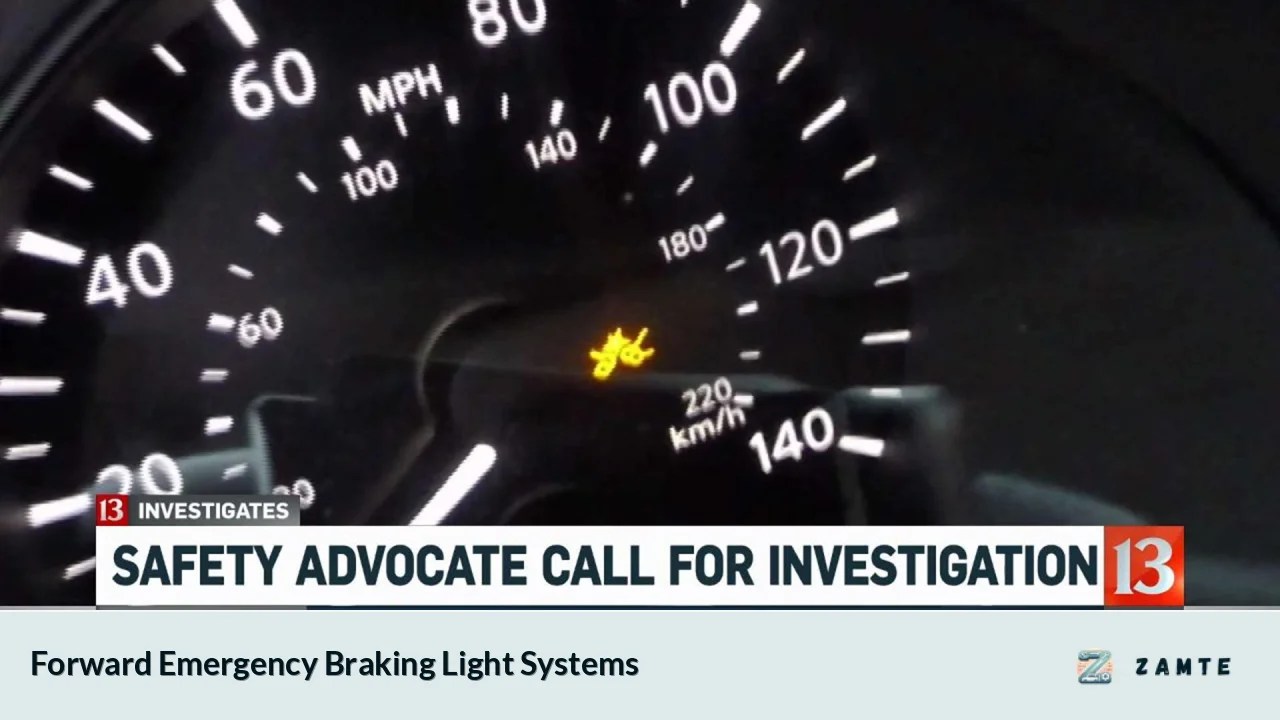In recent years, the automotive industry has made significant strides in enhancing vehicle safety through advanced driver-assistance systems (ADAS). One of the most critical components of these systems is the Forward Emergency Braking (FEB) system. This technology aims to prevent collisions by automatically applying the brakes when a potential forward collision is detected. Despite its benefits, many drivers encounter issues related to the FEB system, particularly concerning the warning light that indicates a malfunction. This article delves into the functionality of the FEB system, common problems associated with it, and effective solutions to ensure optimal performance.
Understanding Forward Emergency Braking Systems
The Forward Emergency Braking (FEB) system is designed to detect potential collisions with vehicles or pedestrians in front of the car. It utilizes a combination of sensors and cameras to monitor the road ahead and assess the risk of a collision. When a potential threat is detected, the system alerts the driver with visual and auditory warnings. If the driver fails to respond in time, the FEB system automatically applies the brakes to mitigate or avoid a collision.
How Does It Work?
The FEB system operates using several key components:
- Radar Sensors: Located at the front of the vehicle, these sensors measure the distance to objects ahead and detect their speed.
- Cameras: Often mounted on or near the windshield, cameras help identify pedestrians and other vehicles.
- Control Module: This unit processes data from the sensors and cameras to determine whether a collision is imminent.
When a risk is identified, the FEB system follows a two-stage warning protocol:
1. Initial Warning: The driver receives a visual alert (flashing light) and an audible warning.
2. Automatic Braking: If no action is taken by the driver, the system engages automatic braking to reduce speed or stop the vehicle entirely.
Benefits of Forward Emergency Braking
- Collision Avoidance: The primary advantage of FEB systems is their ability to prevent accidents, particularly rear-end collisions.
- Injury Reduction: By minimizing collision impact speed, FEB systems significantly reduce injury severity for both drivers and pedestrians.
- Increased Awareness: The alerts provided by FEB systems can help drivers remain vigilant and attentive on the road.
Common Issues with Forward Emergency Braking Light
Despite their effectiveness, many drivers report issues with their FEB systems, particularly concerning warning lights that indicate malfunctions. Here are some prevalent problems:
1. Warning Light Activation
The FEB warning light may illuminate for various reasons:
- Sensor Obstruction: Dirt, snow, or debris can block sensors, preventing them from accurately detecting obstacles.
- System Malfunction: Software glitches or electrical issues can cause false alerts or prevent the system from functioning correctly.
- Mechanical Failures: Problems with brake components can affect how well the FEB system operates.
2. Inconsistent Performance
Drivers have reported instances where their FEB systems activate unexpectedly or fail to engage when needed:
- False Positives: Some drivers experience situations where their vehicles brake suddenly without any apparent obstacle in front.
- Deactivation Issues: The FEB system may deactivate itself during driving without any clear reason, leading to concerns about safety.
3. Difficulty in Turning Off
Many vehicles allow drivers to disable their FEB systems through dashboard settings; however, some models revert back to "on" after restarting. This inconsistency can frustrate users who prefer manual control over their vehicle's safety features.
Troubleshooting Forward Emergency Braking Light Issues
To address common problems associated with FEB systems, consider these troubleshooting steps:
Cleaning Sensors and Cameras
Regular maintenance is crucial for ensuring optimal sensor performance. Clean any dirt or debris from:
- Radar sensors located behind the grille.
- Cameras mounted on or near the windshield.
Checking for Fault Codes
If the warning light persists after cleaning, use an OBD-II scanner to check for fault codes that may indicate specific issues within the system.
Inspecting Wiring and Connections
Loose or damaged wiring can disrupt communication between sensors and control modules. Inspect wiring harnesses for signs of wear or disconnection.
Professional Diagnosis
If basic troubleshooting does not resolve the issue, consult a qualified mechanic or dealership for a comprehensive diagnosis. They have specialized tools to recalibrate sensors if necessary.
User Feedback on Common Issues
Many users have shared their experiences regarding FEB issues online. For instance:
"My Forward Emergency Braking light has started to intermittently come on while driving; I’m not sure why it’s happening."
"I had my FEB activate for no reason while driving on a clear road; it’s quite alarming!"
These accounts highlight that such issues are not isolated but rather common among various vehicle models equipped with this technology.
Conclusion
The Forward Emergency Braking system represents a significant advancement in automotive safety technology. However, like any complex system, it can encounter issues that may compromise its effectiveness. By understanding how these systems work and being aware of common problems and solutions, drivers can ensure that their vehicles remain safe and reliable on the road.
FAQs
- What does it mean when my Forward Emergency Braking light comes on?
It indicates a potential issue with your emergency braking system, such as sensor obstruction or malfunction. - How do I turn off my Forward Emergency Braking system?
You can typically disable it through your vehicle's settings menu under driver assistance options. - Why does my FEB system activate without an obstacle?
This may be due to sensor misalignment or obstructions affecting detection accuracy. - Can I clean my own sensors?
Yes, regularly cleaning your radar sensors and cameras can help maintain optimal performance. - What should I do if my FEB light stays on?
If cleaning does not resolve it, consult a mechanic for further diagnosis.
